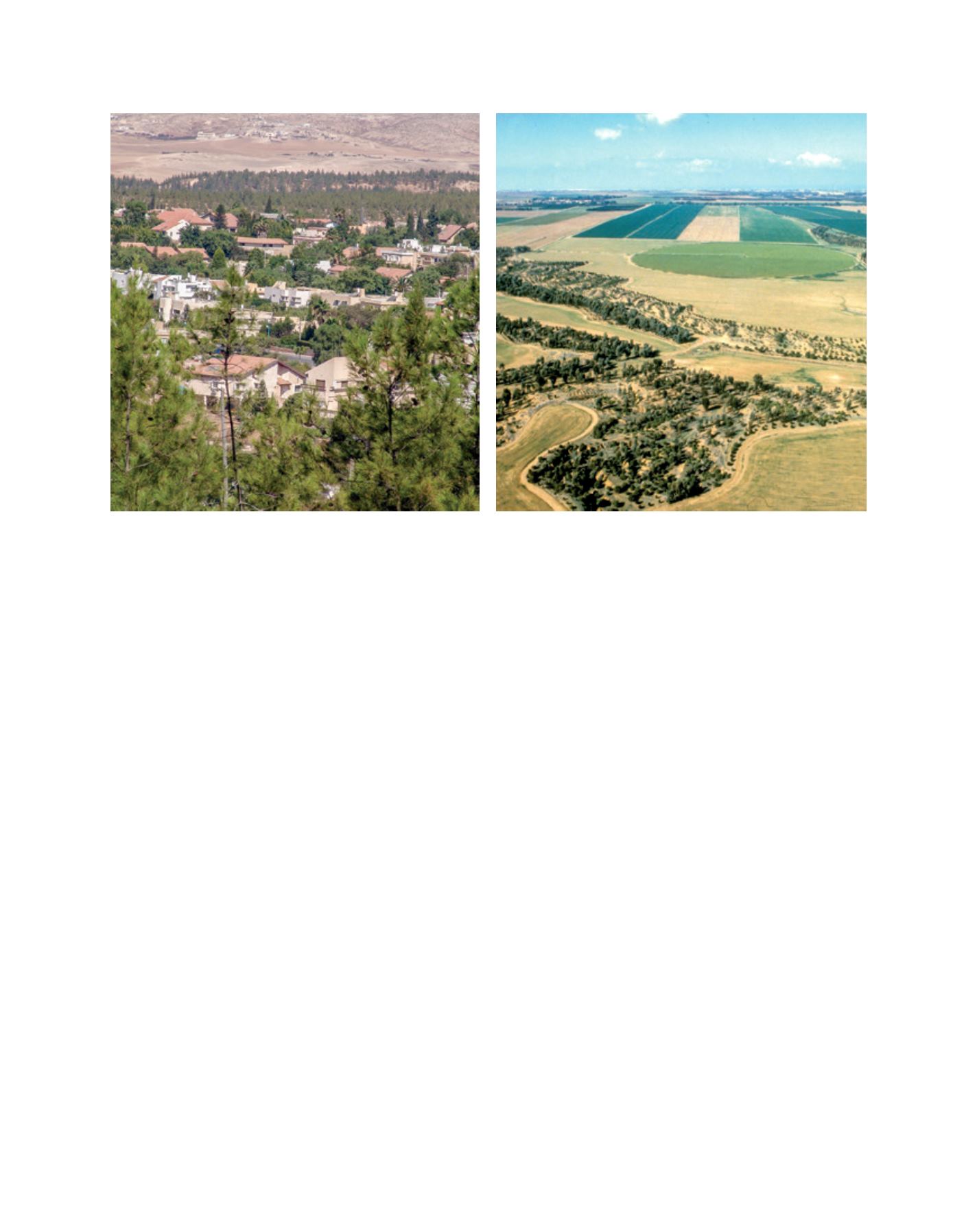

[
] 92
cultural landscape perspective is an important advantage of
the integrated approach. The integrated approach provides
a useful understanding of the cultural inputs, outputs and
services in the context of ecosystem and landscape func-
tion. We suggest that this approach is particularly useful for
environments heavily influenced by humans, for example
in heavily grazed drylands.
Linking both ecosystem services and cultural landscape
frameworks enables concentration on the human dimension
of ecosystems and landscapes management, thus enabling
the integration of rehabilitation interventions within a
multifunctional landscape, including agricultural and
urban ecosystems. The two frameworks are complementary
in providing guidelines for combating desertification and
together have proven successful in adding unique ecosystem
services to the cultural landscape of the Northern Negev.
An evaluation of results from the functional rehabilitation
of Northern Negev ecosystems, from the perspective of the
cultural landscape-ecosystem services approach, indicates
an increase in the diversity and level of ecosystem services
supplied to humans. These ecosystem services comprise all
types of services including:
• Regulating services, which regulate the water cycle
to prevent resource loss and mitigate flood damages;
regulate and prevent soil erosion; protect arable
land, grazing land and urban areas from flooding and
erosion; increase primary productivity as a driver in
the ecosystem’s energy and nutrient cycles; support
populations of natural enemies of agricultural pests;
regulate pollination services; and regulate carbon cycling
through increased rates of carbon sequestration.
• Cultural services, which improve the life quality of
inhabitants: the green belts planted around cities and
villages and along dry streams supply recreation and
leisure sites, native flowering sites, bicycle trails, parks
and community forests. Rehabilitation of the ancient
agriculture sites enables the preservation of historical
and cultural heritage assets and supports forest-based
tourism, thus encouraging visitors to use guest facilities
at neighbouring communities and making an economic
contribution to rural livelihoods.
• Provisioning services, which supply biomass and shade
for sheep, goat and cattle herds owned by the local
population, and supply firewood to the local population
for cooking and home heating.
In conclusion, KKL-JNF’s work in the functional rehabilita-
tion of Northern Negev ecosystems provides an important
contribution to the world’s understanding of desertification
and rehabilitation processes and the importance of an active
multi-use approach to land management.
KKL-JNF’s methods for the functional rehabilitation of
Northern Negev ecosystems can be used as efficient and
applied tools to rehabilitate desertified areas outside Israel,
as well as for adapting to the expected influences of global
climate change in water-limited regions.
KKL-JNF shares with other countries the scientific
basis, applications and adaptations of its methodology for
the return of functionality to degraded ecosystems, which
are supported by long-term monitoring and research
programmes. Results of the rehabilitative actions and
management of rehabilitated areas are evaluated by their
long-term effects and influences. Recent studies assessing
the effects of decades-old rehabilitation works show that
rehabilitation processes contribute to increased ecosystem
integrity and functionality.
Green belts planted around cities and villages and along dry streams provide recreation and leisure sites for inhabitants
Images: Moti Kaplan (left); ‘Albatross’ — KKL Archive(right)
L
iving
L
and
















